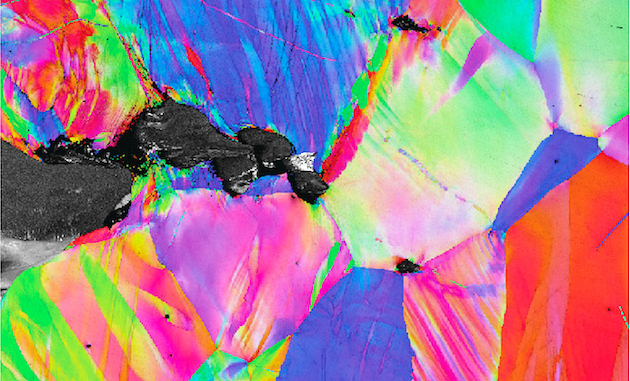Researchers have discovered an “indestructible” metal alloy during an experiment. The mixture amazed the team in two ways: It remains solid at high temperatures and yet does not form cracks in cold temperatures. The discovery opens up new opportunities for materials research.
It’s all in the mixture: Researchers have discovered a metal alloy that neither softens nor breaks, even at extreme temperatures. The mixture of niobium, tantalum, titanium and hafnium remains solid even when heated to a good 1,600 degrees and yet does not become brittle at temperatures below zero – an unusual combination of characteristics for metals. The alloy could therefore open up new applications in technology and space travel, as the team reports in “Science”. But what makes this alloy so stable?
Whether in power plants, machines or in aerospace – many technical areas require metal materials that remain stable even in the face of high temperatures and strong forces. Special alloys are usually used that have a high melting point and whose atomic lattice can withstand permanent deformation for a long time. However, these materials quickly become brittle and break in cold temperatures. For cold conditions, other alloys that are particularly crack-resistant are usually used.
But now researchers led by David Cook from the Lawrence Berkeley National Laboratory (LBNL) have discovered a metal alloy that can do both: it remains solid at high temperatures and yet does not form cracks when it is cold. The starting point for this were experiments with so-called refractory high-entropy alloys (RHEA). These are materials in which several metals with a high melting point are mixed together in almost equal proportions.
“Our team has been working with such alloys for a long time and we have repeatedly found that these materials are very heat-stable, but have extremely low crack resistance,” explains Cook’s colleague Punit Kumar. In cold weather they are among the most fragile metals of all.
Cook and his team were all the more surprised when one of the RHEA alloys they created behaved completely differently. The mixture of around 45 percent niobium, 25 percent tantalum, 15 percent titanium and 15 percent hafnium behaved unusually in two ways. On the one hand, when heated, it initially became harder and more resistant to bending instead of softer. This strength decreased somewhat under high heat, but the alloy could still withstand temperatures of up to 1,600 degrees without melting and becoming soft. “This trend is exactly the opposite of that of most materials,” say the researchers.
On the other hand, the metal mixture did not become brittle when cold. “When the temperature was reduced to minus 196 degrees, the resistance to cracking remained persistently high. The breaking strength of the alloy made of niobium, tantalum, titanium and hafnium even exceeded that of special cryogenic steel in some temperature ranges, as the team determined. “The values were all high and really remarkable for such RHEA alloys,” said Cook and his colleagues.
But what lies behind this unusual resilience? To find out, the researchers analyzed the metal during the tests using crystallographic methods such as electron backscatter analysis (EBSD) and electron microscopy. This revealed that under stress, special defects called kink bands form in the crystal lattice of the alloy. In these narrow strips, the ordered lattice structure collapses locally.
Normally, such defects tend to make a metal more brittle and unstable, but in the case of the new RHEA alloy, the opposite is true: “These bands suppress stress hardening by reorienting microstrips of the crystal toward the higher shear stress,” the team explains. “In parallel, the lattice continually recrystallizes in response to local stresses along these bands, thereby directing damage away from the crack tip.”
“We are showing for the first time that such kink bands deflect the damage caused by a break between atoms and thus prevent crack propagation,” says Cook. “This gives this material its exceptional breaking strength.”
According to the research team, the discovery of this alloy opens up new possibilities for materials research. “Contrary to common belief, complex, refractory alloys can exhibit extraordinary crack stability across extreme temperature ranges, even in the cryogenic regime,” write Cook and his colleagues. “This exceptional damage tolerance opens up the possibility of using such refractory alloys in safety-critical applications.”
It would be conceivable, for example, to use it in reactors, engines or in aerospace. In all of these areas, metals have to withstand high loads at extreme temperatures. Until the new alloy is used, Cook and his team want to further explore its characteristics and peculiarities. (Science, 2024; doi: 10.1126/science.adn2428)
Quelle: DOE/ Lawrence Berkeley National Laboratory
Testosterone is the ultimate masculinity hormone. If the values in men are too low, it not only has a negative impact on sexuality, but also on their health. According to a new study, above certain values the risk of dying earlier increases.
Coffee grounds are pretty versatile and can be used for many different things. Read here why this can also be useful for grilling.
The original for this article “Researchers are doubly surprised by newly discovered “indestructible” alloy” comes from scinexx.















